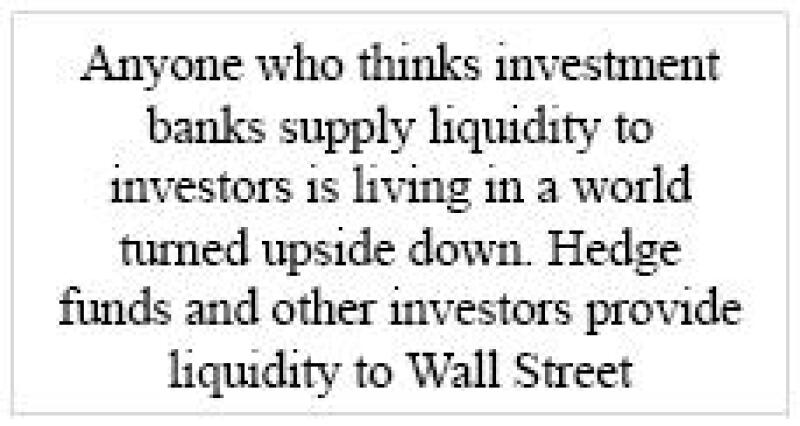In 2005 to celebrate the bicentennial of Lord Nelson’s famous victory at Trafalgar, another son of Norfolk, poultry farmer Bernard Matthews, spent £8,000 erecting signs across the English county declaring: "Norfolk – Nelson’s County." Such is globalization that a bird can sneeze in Hungary and Bernard Matthews is front page news in about half the time it took for official reports of Nelson’s defeat of the French to reach the front page of The Times.
Speed, interconnectedness and complexity define the modern world and are writ large across financial markets. But just as cheap food comes at the price of new variant CJD and H5N1, so contagion of a different stripe can wreak merry havoc in markets. The financial storm that broke in 1998 began with squalls in Thailand and ended with the Federal Reserve Bank of New York strong-arming the big investment banks into the rescue of Long Term Capital Management, while muttering darkly about the systemic risks that could engulf the entire financial system.
If the edifice of modern finance is built on interconnected bricks, the mortar that binds it together is liquidity. In the good old days, before we had ever heard of Bernard Matthews’ Golden Drummers, central banks controlled liquidity through monetary policy, directly via the supply of money and indirectly through the setting of interest rates. Commercial banks transmitted this policy through to the real economy via the rates they charged for loans.
By these antediluvian measures the liquidity picture is a mixed one. Money supply growth in the US is modest, though at 9.3% [M3] is growing faster in Europe than at any time in the last 16 years. This reflects where these economies are in their interest rate cycles. At 5.25% the Federal Reserve is at or near the peak, whereas markets expect the European Central Bank to tighten twice more. Average interest rates across the G7 are 3.7%, up from 2.85% one year ago.
Other elements of tighter policy include the end of quantitative easing by the Bank of Japan and higher reserve requirements in India and China. Another source of liquidity is the accumulation of central bank reserves. This continues at a fair clip in Asia, where the central bankers of China, Japan and Korea control $2.2 trillion. However, a 20% decline in the price of oil means that the robust reserve accumulation of Opec nations has been curtailed.
However, these "official" sources of liquidity are only part of the picture. One of the defining features of modern financial markets has been the creation of credit outside of the confines of the traditional banking system. In the US alone, according to the Securities Industry and Financial Markets Association, issuance of CDOs has totalled $895 billion in the past three years, a number that is greater than the total GDP of Australia.
Central bankers would claim to be indifferent to asset prices. However, CDOs and other structured credit instruments make the transmission of tighter monetary policy more difficult, especially if investors continue to drive credit spreads to ever lower levels. The existence of CDOs and other structured credit instruments is a new challenge for policymakers. At the margin they might incline central banks toward tighter monetary policy in order to force the medicine of higher yields and bigger spreads down investors’ throats.

Investors in these products should also be concerned about a different sort of liquidity, the ability to buy and sell at reasonable spreads without big price movements. There is a view that financial innovation has added to liquidity, by diversifying the type and number of investors and allowing these players to make tightly specified bets. This has yet to be tested by a turn in the credit cycle, but with central banks tightening we might well have some evidence to draw on sooner rather than later.
The relatively short history of what happens when cycles turn and benign markets get nasty does not make pleasant reading for those investors bowled over by CDOs and other such products. Why did LTCM collapse in 1998? A big part of the story was that supposedly liquid structured exposures to markets turned out to be anything but. The death spiral of illiquid securities being marked to market, margin calls, illiquid securities being sold at a fraction of their former value, and yet more margin calls, did for LTCM. It had also sucked in investors in structured products in the US mortgage markets four years earlier. The same horror show will be rewound and replayed again.
Anyone who thinks investment banks supply liquidity to investors is living in a world that is turned upside down. Hedge funds and other investors provide liquidity to Wall Street. Market-making and capital commitment is about as fashionable as cold cuts from Bernard Matthews. In modern financial markets liquidity is a mirage. When you really need a drink at the oasis, you will discover it never existed at all.
Andrew Capon is editor-in-chief at State Street Global Markets, the research and trading business of State Street Corp. He was formerly senior editor at Institutional Investor and has won numerous awards for journalism on fund management and investment issues. The views expressed are the author’s own